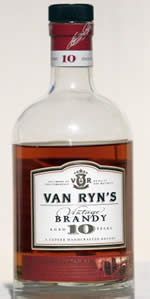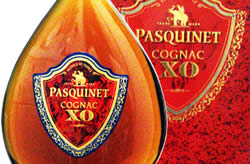Difference between Brandy and Cognac
Key Difference: Brandy, short for brandywine is a sprit that is distilled from wine, grapes and other fruit juices. Cognac is actually a type of brandy that has been distilled in the town of Cognac in France. It is similar to brandy as both are made from grapes.
There are many different kinds of drinks that are available in the market and many people that are not enthusiasts are often confused between different drinks that may seem similar in color and taste. Brandy and Cognac are two such drinks that often confused as they are similar in taste. That isn’t actually wrong as Cognac is actually a type of brand that is produced in France. The people that consume alcohol to enjoy the taste and flavor of the drink can actually tell the difference between two brands, how long they have been aged, the special ingredient that has been used, etc.
 Brandy, short for brandywine is a sprit that is distilled from wine, grapes and other fruit juices. The word ‘brandywine’ is derived from the Dutch word ‘brandewijn’ meaning “burnt wine”. Brandies are more commonly considered as an after-dinner drink and can contain alcohol by volume (ABV) between 35% and 60%. The origins of brandy can be dated back to the development of distillation to ancient Greece and Rome. However, modern brandy can be dated back to the 12th century. Brandies are made using grapes or any fruits that can produce a sugary juice. According to Encyclopaedia Britannica, brandy can also be used to refer to spirit made from pomace and other fermented fruit. However, if the brandy is made from any other fruit instead of grapes, many countries require it to be labeled as ‘fruit brandy’, ‘fruit spirit’, or the name of the fruit should be mentioned on the bottle. The regulations for producing and labeling differ depending on the jurisdiction.
Brandy, short for brandywine is a sprit that is distilled from wine, grapes and other fruit juices. The word ‘brandywine’ is derived from the Dutch word ‘brandewijn’ meaning “burnt wine”. Brandies are more commonly considered as an after-dinner drink and can contain alcohol by volume (ABV) between 35% and 60%. The origins of brandy can be dated back to the development of distillation to ancient Greece and Rome. However, modern brandy can be dated back to the 12th century. Brandies are made using grapes or any fruits that can produce a sugary juice. According to Encyclopaedia Britannica, brandy can also be used to refer to spirit made from pomace and other fermented fruit. However, if the brandy is made from any other fruit instead of grapes, many countries require it to be labeled as ‘fruit brandy’, ‘fruit spirit’, or the name of the fruit should be mentioned on the bottle. The regulations for producing and labeling differ depending on the jurisdiction.
The process of producing brandy requires fermenting the wine, fruit juice or grapes for 4-5 days after which they are distilled, using either pot-stills or column-still, before they are put into casks for aging. There is no set time required for aging as some fruit juices do not require aging. The aging process determines the color of the brandy; if it is not aged the brandy is colorless or clear and the longer it is aged the stronger the color of the brandy. Some brandy may also be added with caramel to adjust the color and the flavor of the beverage. Distillation must differ depending on the type of brandy being produced. For example, wine with ABV 8% to 12% and high acidity is boiled in a pot still. Brandy made from grapes also requires being distilled twice or more to acquire the required aroma and flavor.
Brandy is labeled in a certain way that shows the quality of the brandy. Labels include A.C. (aged 2 years), V.S. (very special, aged 3 years), V.S.O.P. (Very Superior Old Pale, aged at least 5 years), X.O. (Extra Old, aged at least 6 years), Vintage (the label shows the date it was placed into the cask) and Hors d'age (Too old to determine age, commonly more than 10 years). Other names for brandy include cognac and Armagnac, named after the place they were produced.
Cognac is actually a type of brandy that has been distilled in the town of Cognac in France. It is more similar to brandy as both are made from grapes. Brandy is produced in the wine-growing region surrounding Cognac. There are only a few authorized regions that are allowed to make cognac and these regions have been divided into six zones or crus: Grande Champagne, Petite Champagne, Borderies, Fins Bois, Bon Bois and finally Bois Ordinaire.
 Cognac is made from green grapes and only selected grapes are allowed in Cognac production. According to the Bureau National Interprofessionel du Cognac, if the label will carry the name of the crus, then at least 90% of the grapes used must be Ugni Blanc, Folle Blanche and Colombard, while 10% can be Folignan, Jurançon blanc, Meslier St-François, Sélect, Montils or Sémillon. Cognacs that will not carry the name are required to use at least 90% Colombard, Folle Blanche, Jurançon blanc, Meslier Saint-François, Montils, Sémillon, or Ugni Blanc, and up to 10% Folignan or Sélect.
Cognac is made from green grapes and only selected grapes are allowed in Cognac production. According to the Bureau National Interprofessionel du Cognac, if the label will carry the name of the crus, then at least 90% of the grapes used must be Ugni Blanc, Folle Blanche and Colombard, while 10% can be Folignan, Jurançon blanc, Meslier St-François, Sélect, Montils or Sémillon. Cognacs that will not carry the name are required to use at least 90% Colombard, Folle Blanche, Jurançon blanc, Meslier Saint-François, Montils, Sémillon, or Ugni Blanc, and up to 10% Folignan or Sélect.
Once the grapes have been pressed, they are added with yeast and left to ferment for a couple of weeks. The wine is then distilled using traditionally shaped Charentais copper stills until they are a colorless spirit of about 70% alcohol. The distilled spirit is then aged for at least two years in French oak barrels from Limousin or Tronçais. In the oak barrels, the alcohol and the water start evaporating about 3% a year. The alcohol reaches the required 40 ABV by four or five decades. However, the alcohol can also be removed early and diluted with water to reach the same ABV. After four or five decades, the cognac can then be transferred to large glass carboys known as bonbonnes for blending purposes.
The interprofessional French institution BNIC (Bureau National Interprofessionnel du Cognac), the official quality grades of cognac as:
- V.S. (very special) or *** (three stars): designates a blend in which the youngest brandy has been stored for at least two years in cask.
- V.S.O.P. (very superior old pale): designates a blend in which the youngest brandy is stored for at least four years in a cask, but the average wood age is much greater.
- XO (extra old): designates a blend in which the youngest brandy is stored for at least six years but on average for upwards of 20 years.
Cognac and Brandy are more or less the same thing, a brandy. However, they have some distinct differences. Brandy is not limited to being produced from only grapes and can also be produced using other fruits, while cognac is primarily made from distilling grapes that also special kind of grapes. Cognac has a more strict set of rules that need following if it wants to label its drink as a cognac. The taste of the drink must also be consistent depending on the quality and the blend; because of this each cognac house would have a master taster that is responsible for blending all the spirits.
Image Courtesy: brandyandginger.co.za, bartenderart.wordpress.com









Comments
Glory
Tue, 01/23/2018 - 04:41
Perfect
Sat, 09/02/2017 - 16:38
HELPFUL AND EDUCATIONAL
VIJAYKUMAR
Fri, 09/26/2014 - 23:58
Add new comment